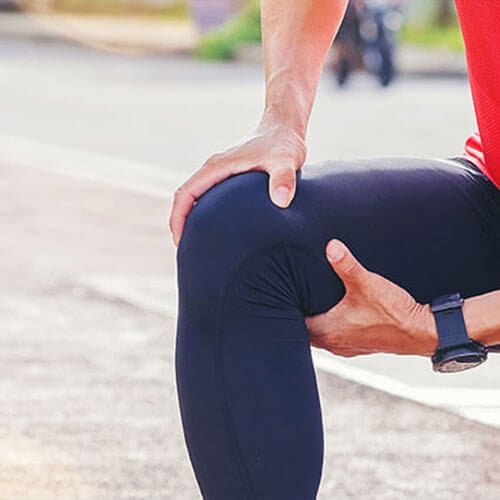Finishing a tough workout definitely feels very rewarding. But the muscle pain that follows? That’s another story. Whether you’re a beginner or a fitness buff, sore muscles are the end product of increased strain or stress on your muscles when you exercise.
The fibers stretch too much and may cause microscopic tears. As a result, your muscles will feel painful, sore, and stiff one to two days after your workout. It’s a phenomenon called delayed onset muscle soreness (DOMS) which can manifest as a familiar ache in the muscles to a temporary loss of strength and mobility.
Compared to other types of body pain, DOMS isn’t felt right away (as its name suggests) and it tends to improve within a few days. However, if the pain manifests right away in a specific area and/or feels more intense and sharp especially when moved, it may be signs of an injury that needs to be addressed ASAP.
While most people think you shouldn’t exercise even if you have sore muscles, some form of movement (done right) can actually benefit you. If you have sore muscles and still want to incorporate physical movement into your routine, take note of these exercises that you may try.
Swimming
If you have access to a pool at home or anywhere else, use it to your muscles’ advantage. Swimming is a light and low-impact exercise that doesn’t put excess weight on the body. It’s very gentle on your muscles, promotes easier mobility, and exerts little to no pressure on the joints.
Yoga
There’s more to yoga than its potential to improve your flexibility, balance, strength, and posture. Yoga may help with sore muscles since it focuses on breathing that helps you relax and balance the nervous system. Plus, it may also help address pain you may be struggling with, especially in the lower back.
Even better, yoga may also brighten your mood and target stress. Some yoga poses to try if you have sore muscles include the cat/cow pose, child’s pose, downward facing dog, or rag doll pose, as seen in the photos below.
Cat/Cow Pose


You can check out yoga classes or tutorials online that are specifically geared toward your current fitness level.
Cycling
Whether you prefer using an actual bike or a stationary bike, cycling is a good exercise for sore muscles. Just like swimming, it’s a low-impact exercise that’s easy on your body and doesn’t add pressure on your joints. When done right and not overdone, cycling may help increase blood flow throughout your muscles and pave the way for a speedy recovery.
Walking
Don’t underestimate its simplicity. Just like cycling, taking a few steps walk in your neighborhood or even inside your home can have the same effect on your sore muscles. Making the effort to walk can promote better blood flow within your muscles and help you recover quickly.
Don’t Forget to Rest, Though!
If the pain isn’t bearable, get some rest. Forcing your body to exercise even if you’re unwell can do more harm than good and cause additional pain or even injuries. As much as possible, give your body time to rest and heal for one to two days, then exercise again.
During your rest days, it’s highly advisable to eat as much healthy and energy-boosting food and drink lots of water. If the pain becomes bothersome, you may take medicines like Mefenamic Acid or Paracetamol. Both are known to help target muscle pain in the body. Take note that inappropriate or prolonged use of some medications for pain may cause problems in the kidney and liver, so take them only as needed and consult with your healthcare provider when symptoms persist.
Generally, exercise is good for the health but for patients with comorbidities such as diabetes with complications, or those with heart disease, some forms of exercise may be not be advised, so always err on the side of caution.
Overall, sore muscles aren’t really something to be very alarmed about. This may also be a sign that your muscle fibers are beginning their healing process, and are getting bigger and stronger so you can do better during your next workout.
A professional trainer or instructor can also properly guide you and help you prevent injuries. They can assist in checking your current fitness level (especially if you haven’t worked out in a long time) and suggest other exercises that’ll help you combat those sore muscles.
If you’re dealing with more intense pain than usual and find it difficult to move, seek medical attention immediately.
References:
https://www.orlandohealth.com/content-hub/should-i-still-work-out-when-im-sore
https://www.webmd.com/fitness-exercise/features/sore-muscles-dont-stop-exercising
https://www.webmd.com/fitness-exercise/a-z/swimming-for-fitness
https://www.kidney.org/content/understanding-muscle-soreness-%E2%80%93-how-much-too-much
https://www.active.com/fitness/articles/is-it-ok-to-exercise-if-you-re-sore https://www.grazia.co.in/lifestyle/7-yoga-poses-to-get-rid-of-muscle-pain-6327-1.html
https://www.fitnessfirst.co.uk/inside-track/fitness/why-swimming-is-the-ideal-recovery-exercise/
https://www.medicalnewstoday.com/articles/321496#easy-on-joints
https://www.healthline.com/health/working-out-when-sore#prevention
https://www.healthline.com/health/fitness-exercise/cycling-benefits
https://www.realsimple.com/health/fitness-exercise/stretching-yoga/yoga-poses-for-muscle-tension
https://www.hopkinsmedicine.org/health/wellness-and-prevention/9-benefits-of-yoga
https://www.choosept.com/health-tips/soreness-vs-pain-whats-difference








